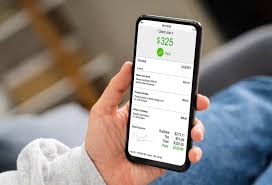Knowing your costs is vital for good decision-making
Understanding your costs is vital for informed business decisions. It helps you determine the profitability of your operations and how to set prices.
But proper costing is complex, and many businesses aren’t doing a good job. Costing is a specialized process that is different from regular bookkeeping for payroll or financial reporting purposes. Even companies with a CPA on staff often don’t have proper costing practices in place because of a lack of time or expertise.
“Many business owners believe they have good costing in place, when in many cases they don’t,” says BDC Senior Business Advisor Jorge Henao, CPA, CMA, who specializes in financial management and strategy. “If you don’t know your costs accurately and in a timely way, it’s very hard to make well-informed decisions about your operations.”
Henao advises businesses to follow these five steps to understand their costs.
1. Define your cost object
The first step is to define what you want to determine the cost of. Accountants call this the “cost object.” It could be anything from a specific product, service or project to type of client or geographic area.
The key is to ask yourself what are the critical things you need to cost in your business to improve decision-making and profitability. For example, you may want to know total costs of product A, B and C, or compare the costs of serving individual versus institutional customers, or Quebec versus Ontario. Or you may want to determine the costs of various projects to compare their profitability.
In most cases, businesses look at their overall costs, but they don’t know their profitability by project, product or service line.
“In most cases, businesses look at their overall costs, but they don’t know their profitability by project, product or service line,” Henao says.
2. Determine traceability of cost objects
The next step is to determine whether costs should be treated as direct or indirect costs.
What determines this classification is whether costs can be traced to the cost object in an economically feasible (cost-effective) way or if they need to be allocated. For example, the cost of cocoa used to make chocolate is a direct cost as the amount used can be traced in a cost-effective way to each unit produced.
On the other hand, the cost of building insurance for a plant is an indirect cost as it’s not cost effective to trace the monthly insurance cost for the production of a specific chocolate unit.
Allocating indirect costs to a cost object can be complex and prone to error. “Businesses often don’t know how to allocate overhead and don’t do it properly,” Henao says. “Allocations tend to be arbitrary. The objective is to allocate indirect costs according to the use of resources by the cost object as best as possible. If you misallocate costs, you could end up subsidizing one product or service at the expense of another and drawing incorrect conclusions.”
3. Identify the nature and key drivers of the costs
Next, it’s necessary to determine the nature of the specified cost object (variable or fixed) and the factors that cause costs to change for the cost object.
- Variable costs—These are costs that change in proportion to sales and operation volumes. Examples are labour and raw materials.
- Fixed costs—These are costs that do not change despite changes in sales and operation volumes. Examples are rent and property taxes.
It’s very important to determine key drivers of costs in your operations so you can optimize them. For example, in a transportation company, this could be the number of kilometres driven. For a processed meat producer, it could be the number of days to cure meats. At a warehouse business, it may be cost per square foot.
Understanding your costs 101: Basic tips for getting started
Understanding your costs may seem daunting, especially if you don’t have resources to hire a specialized cost accountant. But there are a few basic steps that any business can follow to get a better idea of its costs.
Focus on direct and variable costs
First, define your cost object and the direct costs associated with the cost object (see main story for details on these terms). “That’s the most basic step that businesses should start with,” says BDC’s Jorge Henao.
As well, focus especially on identifying variable costs. “These are crucial to understand as they will likely represent the biggest opportunity for improvement,” Henao says.
Think of cost vs. benefit
Since your resources may be limited, be cost-effective about your costing efforts. You don’t have to worry about identifying every single penny of your costs. Focus on the most important ones that you can identify without needlessly burdening your business.
For example, if labour makes up only 3% of the direct costs of the cost object, but identifying this cost would require you to start using time sheets, it may not be worth the time and trouble.
Review your data recording and processing needs
If you use basic accounting software, breaking down costs for your cost object may require extra, time-consuming effort or may not even be possible. Consider upgrading your accounting system if needed to capture and process the required data. “It’s a good investment for your business because you can’t be in control of your operations if you don’t know your costs,” Henao says.
4. Determine a costing method and how to handle data
Depending on the specific conditions of your business, you may adopt the job costing method, process costing method or a combination of the two.
In job costing, costs are assigned to a job, which is a distinct unit or set of units of a product or service. The product or service is often customized, such as roofing a house. In process costing, the output is a large quantity of identical unit products or services. Identical items are usually mass produced for general sale and not for a specific customer. An example: Roofing nails.
Once the costing method has been chosen, you should think about what data needs to be gathered and how to capture and process it. Coordination is important between your accounting and operations teams to ensure a seamless process. “Costing can’t be done in isolation,” Henao says.
If there’s no cost accountant in place it’s important to bring one in to review or assist with the development of the costing in the first place.
Jorge Henao
CPA, CMA, BDC Senior Business Advisor
It’s important to evaluate your accounting software or management information system to see if it adequately supports your costing needs. Smaller businesses commonly use Excel for costing, but this may not be adequate for larger or more complex operations.
“As your operations grow, so does the complexity of gathering and processing data for costing purposes,” Henao says. “You don’t want to do all your costing in a spreadsheet. If you don’t have proper software, you have to capture the data and process it manually, which is very cumbersome and prone to error.”
Cost accounting software can allow you to automatically capture costs—for example, for salaries or materials—and assign them to a job or batch.
5. Consider hiring specialized help
Proper costing is a complex task. You may need to bring in a specialized outside expert, such as a cost accountant, to help you do it properly. Your regular accountant or bookkeeper may not have the expertise or time to do a proper costing exercise.
“If there’s no cost accountant in place it’s important to bring one in to review or assist with the development of the costing in the first place,” Henao says. “Through knowledge transfer during the project, businesses should then be able to develop the competency to update the model in the future.”
If there are changes in the business or the operations model, it’s a good idea to bring in a cost accountant again to get help with any required adjustments.
Culled from: BDC.CA/Articles

